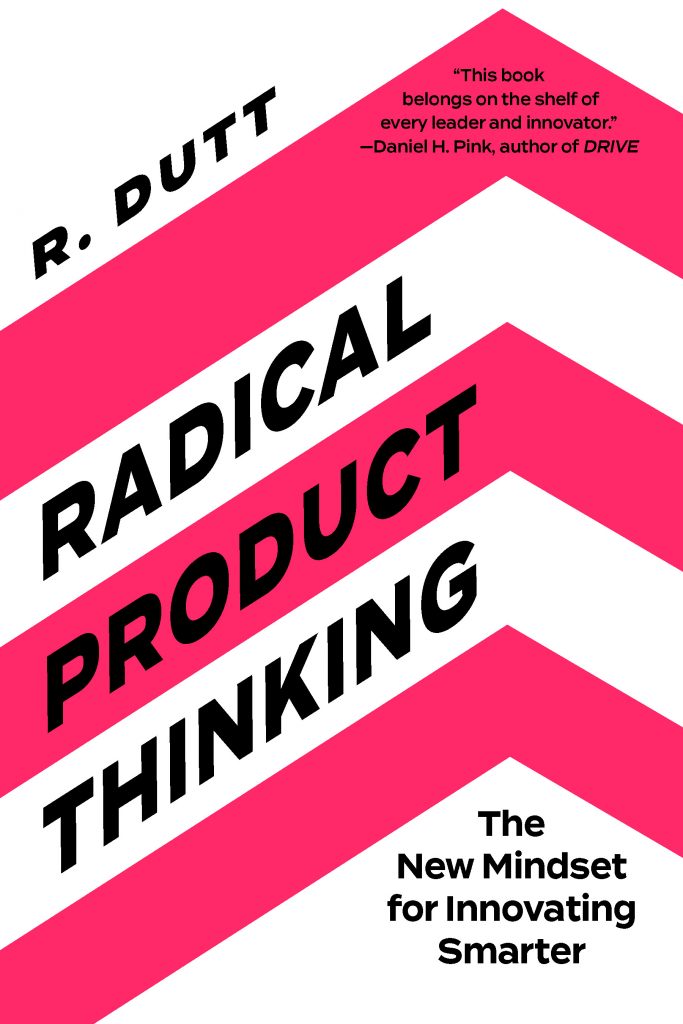By Radhika Dutt
Remember playing the game of “Pin the tail on the donkey” when you were little? You were blindfolded and people around you turned you around a few times until your head was spinning and you wobbled toward your mission armed with a tail on a thumbtack. As an entrepreneur, our days are often reminiscent of this game.
As an entrepreneur when I talked to a wide range of customers to understand their needs, it was disorienting as they each shared very different ideas for what we should be building. It was even more dizzying to talk to investors – each one had a very different idea of what would make us a worthy investment and what problem we should be solving. If you’re a founder, you’ve experienced this sense of feeling thoroughly dazed. And while your head is spinning, you realize your team that’s looking to you for direction on what they should be building – you wobble towards pinning the tail.
This disorientation as a founder results in three common product diseases that most founders will recognize. Left untreated, these diseases often prove fatal. See if you recognize these diseases – don’t worry, by the end of this article you’ll also be armed with a cure.
1. Pivotitis
This is the disease we catch when we keep switching direction, trying one thing after another, in pursuit of the nirvana of product-market fit. Common symptoms include demoralized employees, and confused customers.
In the absence of a clear vision, we catch Pivotitis as we follow the mantra of “try something in the market and see what works” – we try one strategy and if that doesn’t work we try the next. This is not to dismiss the importance of pivoting when needed, but the reality is that as an entrepreneur you can at most pivot two or three times before you run out of money and momentum.
Pivoting should be done with adequate gravitas. It requires a clear vision for where you are going, what you’ve learned that requires a course correction, and a clear definition of the new direction. Above all, to avoid demoralizing your employees, you have to communicate the above so you can bring your team with you on the journey.
2. Obsessive Sales Disorder
This product disease strikes when we repeatedly trade off our long term vision in exchange for short term gains. Most common symptom is a feeling of being lost at sea, feeling like you’re going wherever the currents take you.
Often this disease results from conflating being customer-driven with giving customers whatever they ask for. Most founders have heard the fateful words “The customer is ready to buy. They just need us to add one small feature to our product.”
It’s a tempting proposition that sounds mostly harmless and I remember uttering these words myself. But by the end of the quarter, while the sales team is popping the champagne over their thick stack of contracts, the poor engineering team has a roadmap a mile long that’s completely driven by one-off customer requests rather than by the longer-term strategic goals of the company.
Making this trade-off occasionally is one thing. But when we frequently give up long-term benefits to satisfy short-term demands, we’re likely to be suffering from Obsessive Sales Disorder. Overcoming Obsessive Sales Disorder requires both a clarity of vision and ensuring that your vision shapes your everyday decision-making.
3. Hero syndrome
This disease strikes when we focus on scale and external recognition instead of the problem we set out to solve. Symptoms include scaling too early, taking large risks with the justification of “go big or go home”, and conflating the ability to raise funding with finding product-market fit.
The first company I co-founded, Lobby7, began as a VC funded company. From the moment we raised funding, we were encouraged to “go big” and scale. Our sales efforts targeted companies with recognizable logos, our offices were in the financial district in Boston so we would seem big to our clients, and we were burning more money than we should have. In the end, the company was acquired for the technology we had built, but we had little leverage in our negotiations because we had run out of money.
That was over 20 years ago, but Hero Syndrome is still rampant today. Avoiding it requires recognizing that building a successful company doesn’t always mean gunning for unicorn status. Whether or not your company becomes a unicorn is largely a matter of luck – you cannot play the slots with any certainty that you’ll win the jackpot. Instead, if you focus on the problem you’re setting out to solve, you can build world-changing products systematically.
My upcoming book, Radical Product Thinking, gives founders and organizations a clear process for building successful products that avoid these diseases. Here are three key takeaways from the book:
- Start with a clear vision: One of the reasons feedback from customers and investors is dizzying is that your vision statement may be too broad. For example, in my first startup, our vision was to “Revolutionize wireless.” If you’re trying to be “the leader in XYZ” or focused on “disrupting ABC”, you’re likely running into the same problem. You need to articulate the problem you’re setting out to solve in detail by identifying whose problem you’re solving, what they’re trying to accomplish, why the status quo is unacceptable, and how you’ll bring about the world you envision. To make it easier to write such a vision statement, you can use this free Mad-Libs toolkit for a radical vision statement.
- Use your vision as you discuss your everyday decisions: In making decisions, you’re constantly trading off progress towards your vision against the reality of your short-term business needs. Now that you have a clear vision, you can also acknowledge what you need for survival to talk to your team about the right balance between the long-term and short-term. You can visualize these tradeoffs on a two-by-two prioritization rubric of Vision vs. Survival.
- Communicate with your team: Sometimes diseases happen because we’re all moving fast, but in different directions. As a founder, you need to scale by spreading your thinking across your team. This is why the Mad-Libs statement for crafting a shared vision and the axes to talk about the right trade-offs and priorities are designed with the goal of helping you communicate your vision and intuition to your team. When you craft a shared vision and explain your rationale for decision making, your team can make decisions like you would without requiring your presence in every meeting.
In building our companies, listening to customers is like stopping to ask for directions. When we know where we want to go, our customers can tell us if we’re heading the right way. This approach of crafting a clear vision, priorities and communication helps you make sure that you’re asking for directions and can course correct systematically. It helps you build successful, world-changing products and avoid getting disoriented and catching product diseases.















Pingback: The One Question Every Founder Should Ask and 3 Ways to Find the Answer – THE MIRROR OF MEDIA
Pingback: The One Question Every Founder Should Ask and 3 Ways to Find the Answer - StartUp Mindset
Pingback: 3 Product Diseases that Could Kill Your Startup (and How to Avoid Them) – Entrepreneur – Start, Run and Grow Your Business